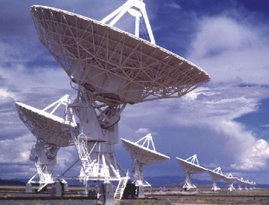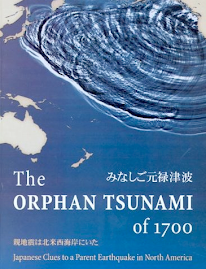
Sunday, May 10, 2009
The sensation of reading Chinese and Japanese characters
It is difficult for us, having learned a language written alphabetically, to imagine what it is like to read in Chinese and Japanese.
The best approximation I can think of for a native English speaker who does not know characters is to imagine having to do math in words.
in English: two divided by three multiplied by sixty equals forty.
in characters: 2/3 X 60 = 40
The characters have certain advantages
They are ideographs in many situations, so the meaning may be guessable even if you have never seen a term before. For example, 糖尿病 is "sugar(y) urine disease", which is one of the ways diabetes was diagnosed centuries ago when it was noted that ants were attracted to the urine of sufferers.
They are compact. In general, for translated text, the length in characters is half the length of the English.
渋谷
Shibuya (a place in Tokyo)
So you move your eyes about half the distance to take in the same idea. When speed reading, eye coordination usually becomes really difficult above 600 words per minute, so effectively, if one could read comfortably at 500 words per minute, reading at that linear speed would be comparable to reading comfortably at 1,000 words per minute in English.
They are perfect for skimming in Japanese. Because characters usually have more strokes than phonetic elements in Japanese, the characters stand out, almost as if they have been bolded.
They do not change form. Although there are characters with multiple forms, especially for surnames, usually, the form of a character is stable, so you learn it once and that is it. Try that with am/is/are, water/aqua/hydro, etc., in English. The pronunciations may be irregular in either language, but usually the character gives at least a hint of the meaning. It does not matter how you read them aloud, their basic meanings stay the same.
If you can read Japanese, you can guess at basic meanings in Chinese, and vice versa. Centuries ago, some European philosophers considered trying to develop a basic set of universal characters so that one written form could convey one basic meaning and be read aloud in whatever way the reader would like.
万能 翻訳 機
omnipotent translation device = universal translator, English
ban nou hon yaku ki, Japanese
universale traduttore, Italian
universaloversattare, Swedish
The characters have disadvantages
They are learning frontloaded. The characters take substantial time to learn. The basic set is approximately 2,000, and to be fully literate, more like 5,000. However, the basic set works out to learning about one per day in school, so this really is not so onerous, and thereafter, although there will be many idiosyncratic readings to learn, the meaning is usually guessable. On the other hand, English is learning backloaded (it does not take long to learn the letters, but it takes the rest of your life to learn spellings, pronunciations, and meanings), you will be looking up words until you die wondering what they mean and how they are pronounced. (What is surfeit? How is it pronounced? Annoying.)
The characters, as they are often written in compounds, are missing important information usually conveyed in English by -ed, -ing, etc., singularity and plurality, and other concepts. In other words, it might say "dissolve" in Japanese, but we may not know whether this means "dissolves", "was dissolved by", "will dissolve", etc., without reading the entire context. This could be overcome merely by being explicit.
A set of characters would also require a phonetic set of symbols to write what the characters do not cover.
All in all, since in Japanese the meanings of most words, including those of newly encountered words, are usually guessable, and since reading speed can be about double, as explained above, the total effort in learning to read Japanese and actually reading Japanese over a lifetime is, I think, counterintuitively, less than learning to read English. As when buying a car, what we really want to know is how much it costs to buy the car, how much the financing will be, how much the insurance will be, how much the maintenance will be, and how much the gas will be, not just the upfront price of the car.
The best approximation I can think of for a native English speaker who does not know characters is to imagine having to do math in words.
in English: two divided by three multiplied by sixty equals forty.
in characters: 2/3 X 60 = 40
The characters have certain advantages
They are ideographs in many situations, so the meaning may be guessable even if you have never seen a term before. For example, 糖尿病 is "sugar(y) urine disease", which is one of the ways diabetes was diagnosed centuries ago when it was noted that ants were attracted to the urine of sufferers.
They are compact. In general, for translated text, the length in characters is half the length of the English.
渋谷
Shibuya (a place in Tokyo)
So you move your eyes about half the distance to take in the same idea. When speed reading, eye coordination usually becomes really difficult above 600 words per minute, so effectively, if one could read comfortably at 500 words per minute, reading at that linear speed would be comparable to reading comfortably at 1,000 words per minute in English.
They are perfect for skimming in Japanese. Because characters usually have more strokes than phonetic elements in Japanese, the characters stand out, almost as if they have been bolded.
They do not change form. Although there are characters with multiple forms, especially for surnames, usually, the form of a character is stable, so you learn it once and that is it. Try that with am/is/are, water/aqua/hydro, etc., in English. The pronunciations may be irregular in either language, but usually the character gives at least a hint of the meaning. It does not matter how you read them aloud, their basic meanings stay the same.
If you can read Japanese, you can guess at basic meanings in Chinese, and vice versa. Centuries ago, some European philosophers considered trying to develop a basic set of universal characters so that one written form could convey one basic meaning and be read aloud in whatever way the reader would like.
万能 翻訳 機
omnipotent translation device = universal translator, English
ban nou hon yaku ki, Japanese
universale traduttore, Italian
universaloversattare, Swedish
The characters have disadvantages
They are learning frontloaded. The characters take substantial time to learn. The basic set is approximately 2,000, and to be fully literate, more like 5,000. However, the basic set works out to learning about one per day in school, so this really is not so onerous, and thereafter, although there will be many idiosyncratic readings to learn, the meaning is usually guessable. On the other hand, English is learning backloaded (it does not take long to learn the letters, but it takes the rest of your life to learn spellings, pronunciations, and meanings), you will be looking up words until you die wondering what they mean and how they are pronounced. (What is surfeit? How is it pronounced? Annoying.)
The characters, as they are often written in compounds, are missing important information usually conveyed in English by -ed, -ing, etc., singularity and plurality, and other concepts. In other words, it might say "dissolve" in Japanese, but we may not know whether this means "dissolves", "was dissolved by", "will dissolve", etc., without reading the entire context. This could be overcome merely by being explicit.
A set of characters would also require a phonetic set of symbols to write what the characters do not cover.
All in all, since in Japanese the meanings of most words, including those of newly encountered words, are usually guessable, and since reading speed can be about double, as explained above, the total effort in learning to read Japanese and actually reading Japanese over a lifetime is, I think, counterintuitively, less than learning to read English. As when buying a car, what we really want to know is how much it costs to buy the car, how much the financing will be, how much the insurance will be, how much the maintenance will be, and how much the gas will be, not just the upfront price of the car.
Subscribe to:
Post Comments (Atom)

No comments:
Post a Comment